Latest news from Hortobágy
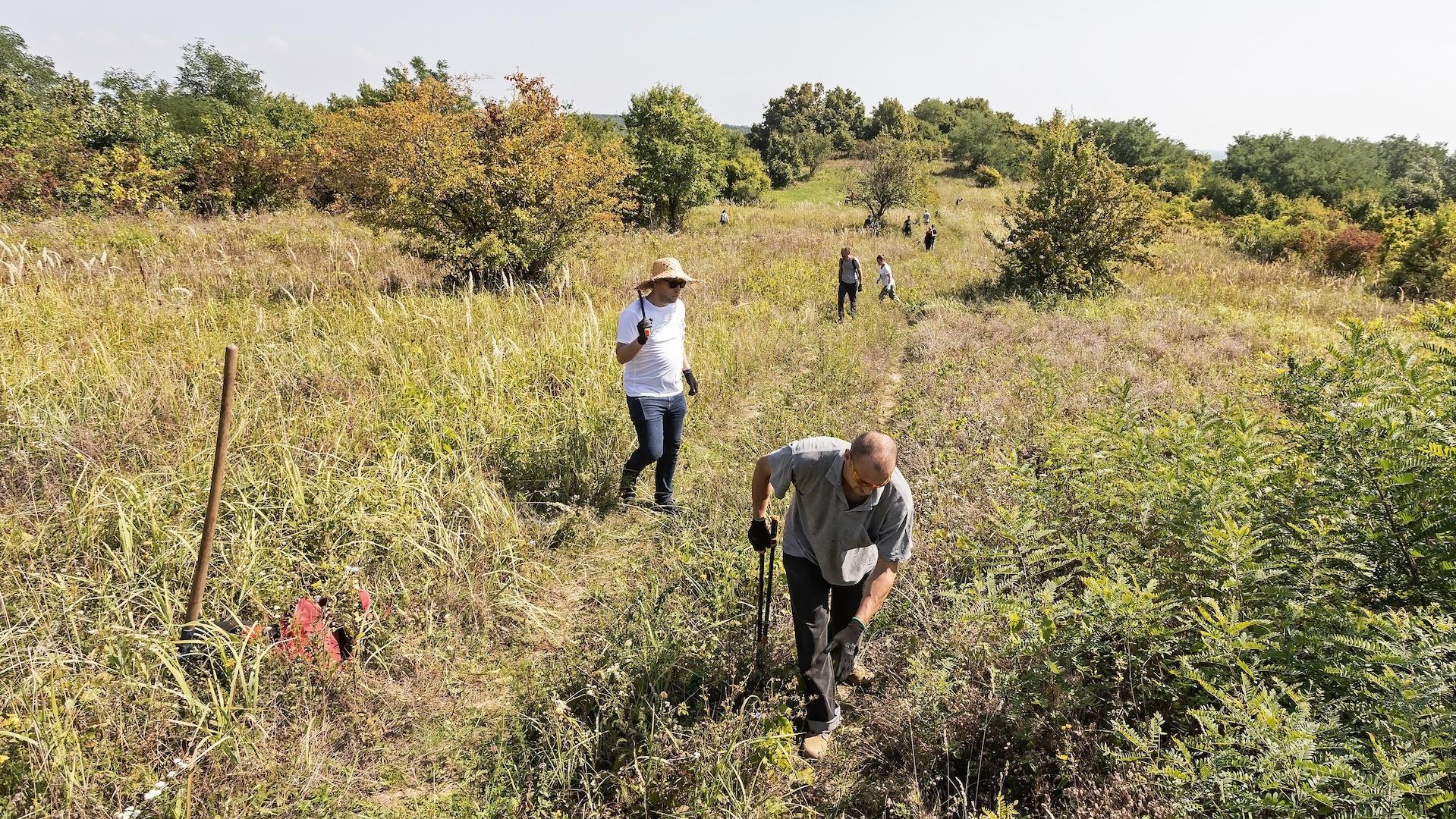
The glass is half full – the GRASSLAND-HU LIFE integrated project is halfway through in Hortobágy National Park
The LIFE integrated project is halfway through its 8-year duration. Given that the overall objective of GRASSLAND-HU is to restore and conserve the natural landscape of the Pannonian Steppes, the Hortobágy National Park Directorate (HNPD) intends to report on the status of work and give information about the progress that had been reached on the designated project locations within its territory so far.
Transforming the landscape to historic grassland from project sites
The HNPD involved in the country-wide project with four sites, three of which are located in Szabolcs-Szatmár-Bereg County (Kaszony-Hill, Fülesd Moorland, Hetefejércse), and one in the area of Nyírség (Daru-meadow), with a total land area of 169 hectares.
Conservation actions include elimination of invasive species, habitat restoration, water retention, and implementing grazing schemes favourable for protected plant species.
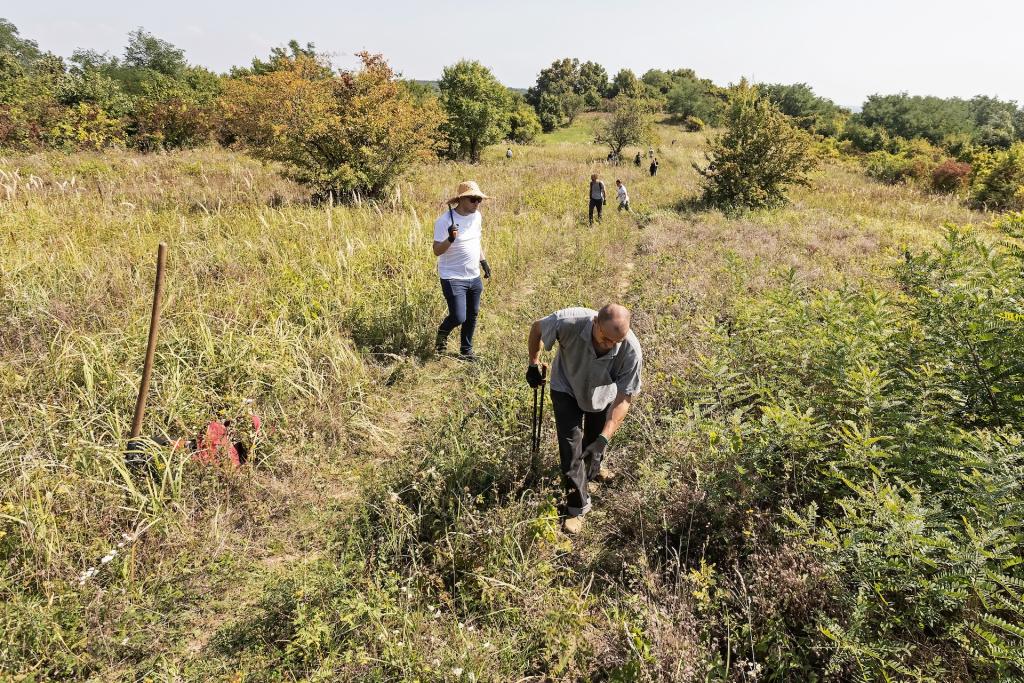
In the area of Kaszony Hill (an area of 34 hectares), the aim was to restore an abandoned vineyard affected negatively by the abandonment as natural processes have impaired the conservation status of that valuable secondary habitat. Consultations with experts resulted inland management practices – implemented subsequently by rangers and external contractors – best suited to preserving rare native invertebrates in the site Some of the black locust trees that grow spontaneously in the field, were removed. A tractor and its attachments - a mower on the back and large rake on the front – was on site to pull out, grid up and mulch the large invasive trees growing on the vineyard, and sowing grass seeds collected specifically in the area is ongoing. Restoration work included cleaning the flat area on the top the quarry leaving sufficient number of patches and shelters for a wide variety of grassland species. In the abandoned orchard along the foothill area, cleaning involved removing old and dead fruit trees and replacing them with seedlings of local type fruit trees, and the site is being constantly managed now (to prevent spontaneous afforestation).
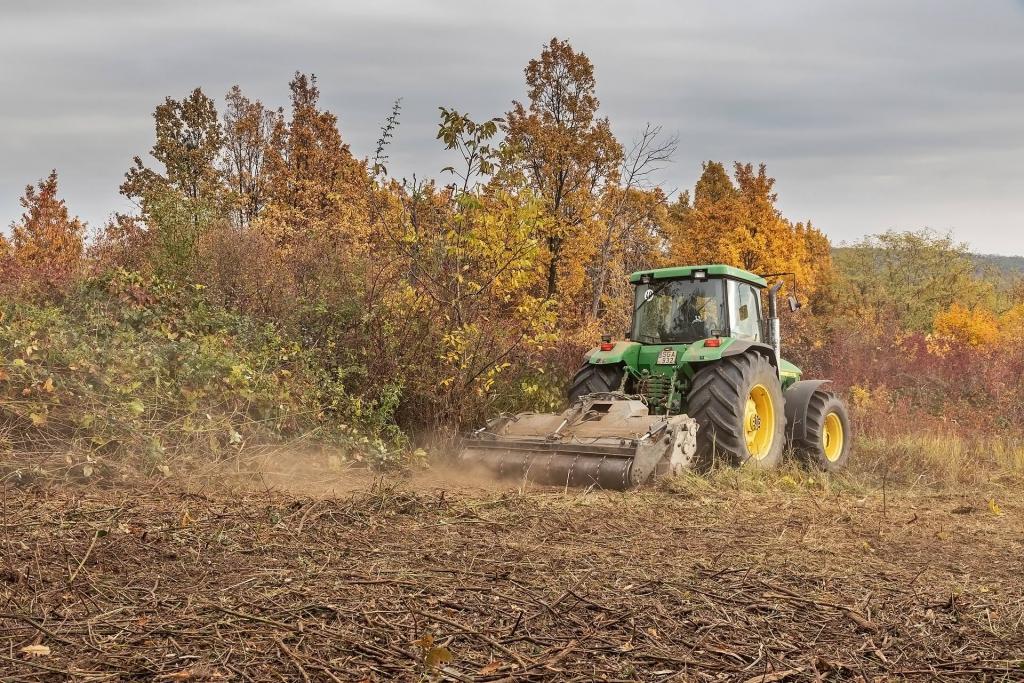
In Fülesd Marshland (Fülesdi Láprét in Hungarian; an area of 22 hectares), the protection of the Large blue (Phengaris arion) and its food plants, the Marsh gentian (Gentiana pneumonanthe), and the Great burnet (Sanguisorba officinalis) are the most important tasks. The two plants were threatened by the False indigo bush that had overgrown in the southern part of the marsh, thus the aim here was to control the spread of the invasive plant. Treatments were applied successfully both on grassland and in the canal. Due to cleaning, 2.5 hectares area will be eligible for agri-environmental subsidies as a grassland site, which can be a motivation for farmers to adopt sustainable agricultural practices in the future.
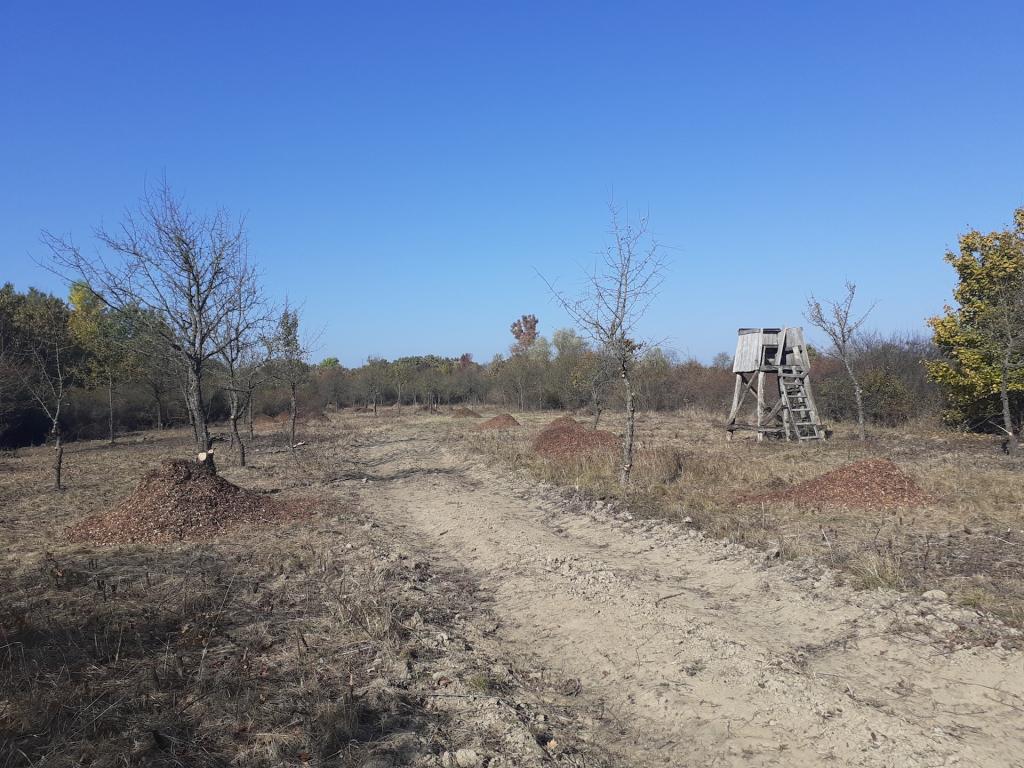
The north part of the grassland area was also abandoned; habitat restoration started here also through involving external contractor. Shrubs took over the former rice field that needed to be removed by using both manual and machine work. The removed shrubs were then shredded with mulcher, and transported from the site not to prevent the healthy development of grassland. Mechanical mulcher is used to control woody vegetation and maintain historic grassland conditions.

On the Cibere Canal, which cuts through the area, a concrete water retaining structure was built to provide constant water level, thus ensuring ideal conditions for grassland habitats and species.
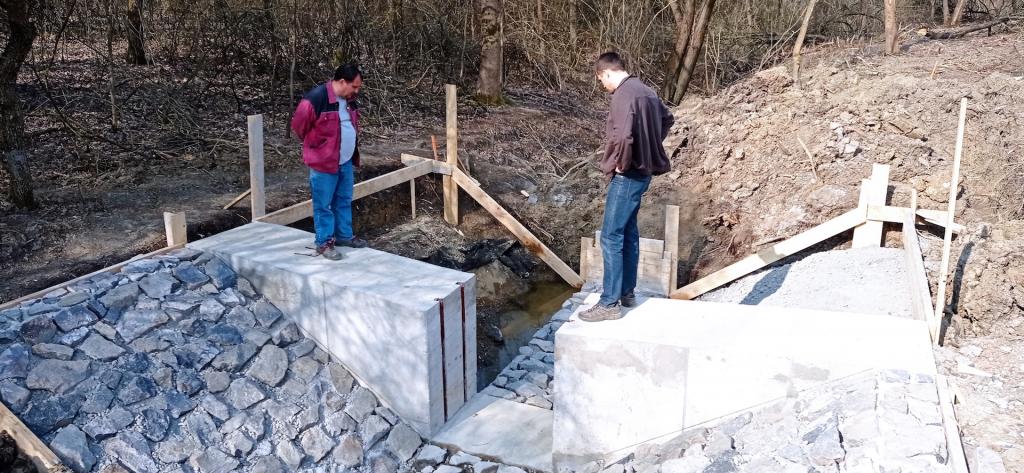
In the case of the fresh meadows of Hetefejércse (an area of 37 hectares), in order to conserve two ecologically strongly connected species, the sulphurweed (Peucedanum officinale) and the Fisher's estuarine moth (Gortyna borelii lunata) we have been working with the land user for many years, who grazes livestock in the area,. We have prescribed him a temporal and spatial land use scheme focusing on the most important conservation aspects. Invasive shrub treatments are being conducted in the affected areas. On lands using for grazing, portable electric fence will be installed soon to protect sulphurweed from farm animals.
In the Petneháza Daru Meadow (an area of 76 hectares), the highly protected Marsh angelica (Angelica palustris) is the indicator species of the moor grass (Molina) meadows, thus the protection of the species is the main habitat management objective in this area. Habitat restoration work on the former arable lands and marshes is underway: we have already sown the area with special grass seed mixture collected from similar grassland habitats. From stripe seeding, spontaneous colonization will be expected.
Mowing methods (both mechanical mowing with tractor and by hand with scythe) were applied for the control of invasive plants on an area of 10 hectares invaded by common reed and on an area of 2 hectares where tussock grasses were overgrown. The canal bed that crosses the area, also requires regular mowing, while it is heavily infected with goldenrod.
Invasive shrub treatments (both mechanical and hand) are being conducted in the area to reduce the spread of invasive plants.
Networking and Awareness-raising
During an event as part of the Magical Hungary (“Varászlatos Magyarország”) environment awareness campaign, with the title of “Today only a nest, tomorrow the ocean”, volunteer conservationists were involved in the removal of invasive species at Kaszony Hill project sites. The digital platforms of the Hortobágy National Park Directorate and the print magazines of Magical Hungary provide more information about the event.
Awareness raising article was published in the special autumn edition 2022 of Földgömb Magazine related to project actions conducted in Kaszony Hill.
An Art Contest was announced focusing on the wildlife of Kaszony Hill and it was opened to more age groups. We evaluated more than 850 entries and awarded several prizes in each age category. Our second thematic art contest is open, with a deadline of end of April.
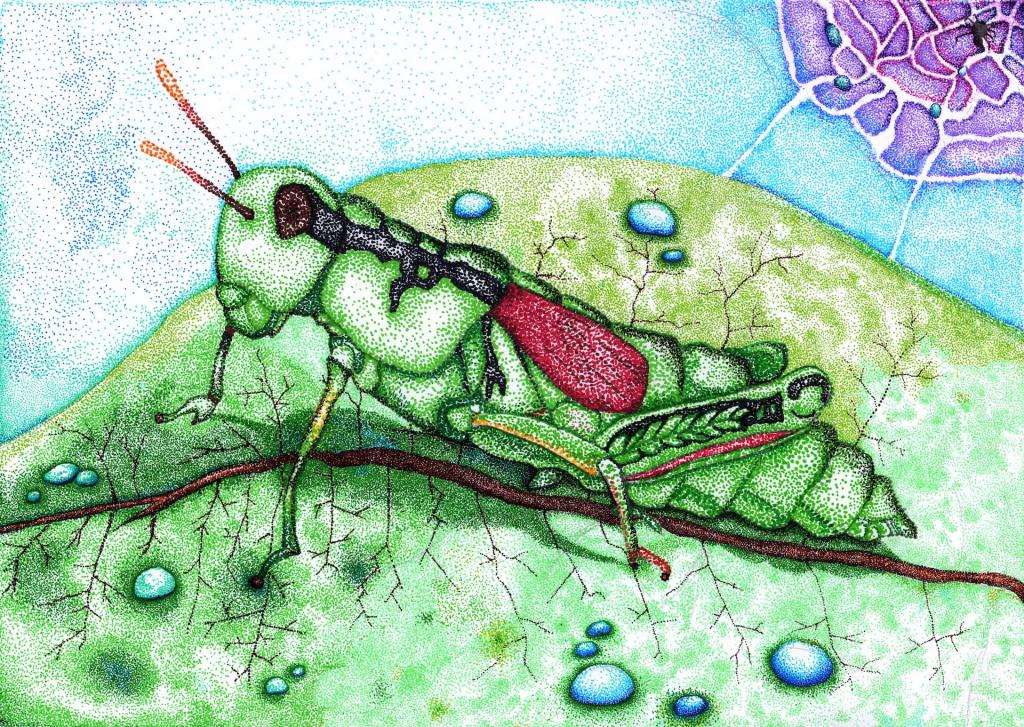
We have printed 1500 copies posters series, mainly for farmers in A2 format. The posters provide information on the key ecological characteristics of the project sites from the farmers’ point of view. Scanning the QR code on the posters, takes you to the website of the Grassland Conservation Management Advisory Service.
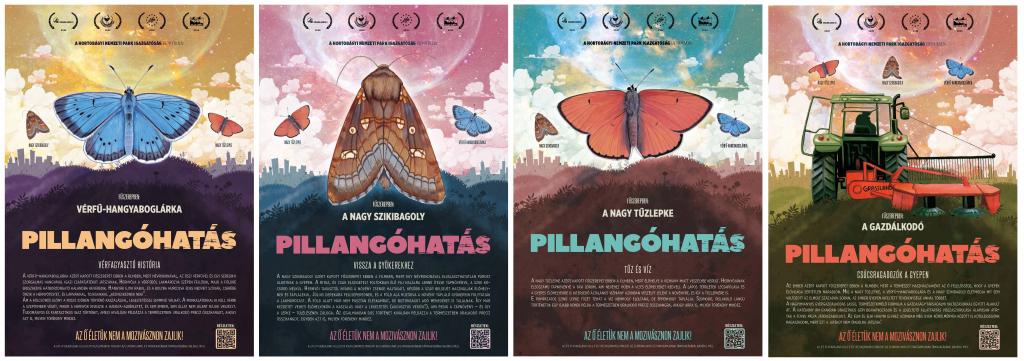
Giving technical advice on the spot
As a project partner, the Hortobágy National Park Directorate has also joined to the Grassland Conservation Management Advisory Service established under the project, and from 2021, the Directorate has been employing two specialist advisers in full-time. In addition to giving advice to farmers on the spot, we focus our work at project sites on building good relationship with farmers, and through awareness-raising actions calling upon local stakeholders to actively engage with the Grassland Conservation Management Advisory Service and sustainable land use.
The tasks ahead of us
As the project develops, we have to focus not only on new challenges, but also on systematic monitoring of actions already undertaken. The most important one is to monitor the effects of habitat management.
Due to the arrangement of property relations, restoration treatments haven’t already begun, but it will be conducted soon, and maintenance works that require on-site presence will continue.
Further awareness-raising articles will be published, and in the “Daru-leaflets” of the HDNP, a series of information leaflets, we will present the important technical aspects of the project.
Over the current second art competition like in the case of first competition, we will not only award the best drawings, but we intend to use them as illustrations for further awareness-raising materials.
Over time, the work of Grassland Conservation Management Advisory Service will be more complex, and we hope that more and more farmers will benefit from the information provided by the specialist advisers.
Source: Hortobágy National Park Directorate